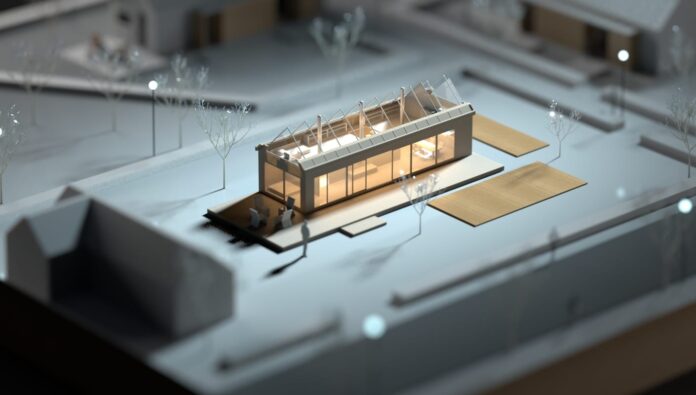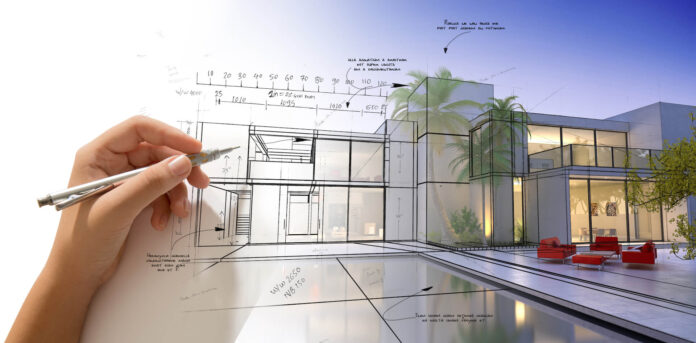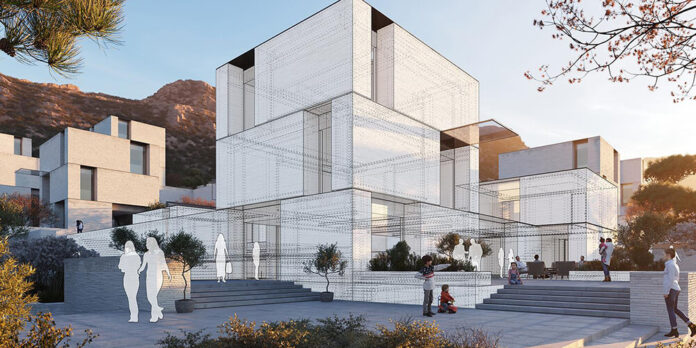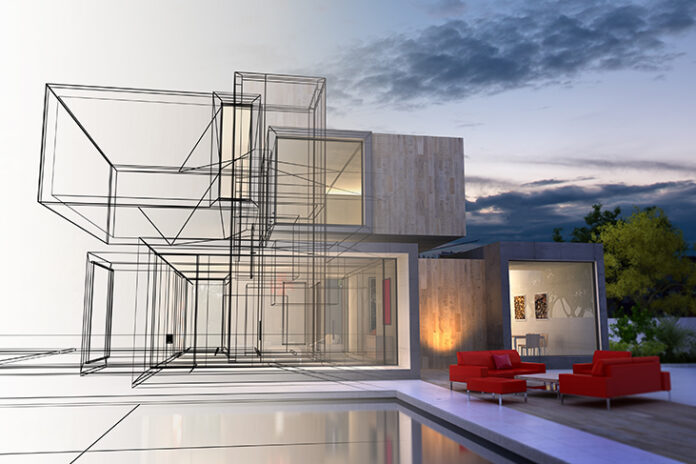The ability to captivate customers and stakeholders is essential to succeeding in the competitive world of architecture. Architectural concepts may be expertly imagined, but the trick is convincing potential clients, investors, and decision-makers that these ideas are worth pursuing.
Architectural rendering is a potent tool that can take presentations to a new level in the pursuit of engagement and persuasion. Rendering gives life to static concepts through the seamless fusion of artistry and technology, allowing stakeholders to experience proposed projects before they are created.
What is Architectural Rendering?

When an architect or designer creates beautiful, real-life images of a project, it is an architectural rendering. Architectural rendering services include using computer software and advanced technologies to transform architectural plans, 3D models, or blueprints into real images.
It is an excellent element that encourages clients, investors, stakeholders, and buyers to look at the property’s exclusive features and details.
What is the Importance of Architectural Rendering?
There are multiple reasons why architectural rendering holds immense importance in today’s construction world. Among the many reasons why architects use rendering services is to boost their project’s presentation. Let’s look at how it helps in doing so and attracting more clients:
1. Helps Create Visually Appealing Images
How would a client or buyer be interested in your property? Looking at its stunning and appealing images. Through architectural rendering, architects develop 2D designs into 3D images using colors, textures, lights, and materials. It helps give your property a life where your potential clients and investors can imagine planning their life.
2. Instilling Emotions And Aspirations

Adding life to anything brings an array of emotions, and that is exactly what an architectural rendering does to your image. When buyers and investors look at a real-life building, they start to imagine how and what the benefits of purchasing the unit will be.
To enhance your client’s experience, you can take benefits of outsourcing architectural services, which can carefully craft an ambiance that can instantly ignite the desire and aspiration in your buyer’s mind. Such visuals help them imagine living or working in that property and thus feel deeply connected with it.
3. Enhancing the Marketing Strategies
Another method for selling your project is to use marketing and services for architectural rendering to supplement those strategies. With the help of architectural rendering designs, you can easily create compelling banners and posters of your projects instead of traditional ones that will attract your audience much easier.
Moreover, these rendering designs will also showcase professionalism and how effective your brand is in sharing even minute details with clients. To attract more customers, you can add these rendering images to brochures, websites, and social media platforms.
4. Communicating the Design and Vision

If you wish to communicate how your project will look in the end, there is nothing better than an architectural rendering. You can visually engage and communicate with your potential clients and sell your idea through these rendering images. You can easily share the layout, blueprints, and other details, making them feel connected with the overall plan.
It will also offer your customers clarity about how the space will look once it is completed. Such clear communications often lead to successful relationships and trust-building between the customers and the developers.
5. Highlight Unique Selling Points
Not every part of your property project will have a USP. Some portions will be much better than others at convincing people to buy your project. With the help of architectural rendering, you can easily highlight those unique selling points.
Whether it is a breathtaking view outside the property or a design that has never been used before, you can highlight anything possible with an architectural rendering. Focusing on special features will attract people to your project, especially those looking for such elements in their dream property.
Bridging the Gap Between Idea and Reality

Architectural rendering allows for the metamorphosis of ideas into tangible, visually comprehensible concepts. This means that the abstract thought processes of architects and designers can be transformed into something more digestible for clients who may not have a design background. Think of it as translating the intricate language of architectural design into a universally understood visual vernacular.
By creating detailed, lifelike images, clients are better equipped to envision the proposed design in the context of the real world. This immersive experience aids in decision-making, ensuring that clients feel more involved and invested in the project. As a bridge between idea and reality, architectural rendering becomes an indispensable tool for fostering understanding and alignment between architects and their clients.
Enables Rapid Iteration and Feedback
One of the unsung benefits of architectural rendering is its potential to expedite the feedback loop. Instead of waiting for physical models to be built or relying solely on 2D drawings, architects can produce 3D visualizations quickly, allowing clients to provide real-time input. This rapid iteration is a game-changer in the design process.
It means that any discrepancies or desired changes can be addressed almost immediately, ensuring the design aligns perfectly with client expectations. This not only reduces the time and resources spent on revisions but also strengthens the collaborative bond between architect and client, ensuring a smoother project trajectory and ultimately, a design that embodies shared vision and goals.
Demonstrating Environmental and Contextual Integration

In today’s world, it’s not just about the standalone structure, but how it integrates with its environment and the surrounding context. Architectural rendering allows designers to depict not only the building itself but its relationship to the surrounding landscape, infrastructure, and other architectural entities. Clients can thus visualize how a proposed building will sit within its environment, understand its impact, and gauge its harmony with surrounding elements.
This is particularly important for projects where environmental sustainability, cultural relevance, or contextual alignment are paramount. By showcasing a building in its entirety – both in isolation and within its broader context – architectural rendering gives a holistic view that empowers clients to make informed decisions about the project’s direction.
Final Thoughts
Architectural visualization is key to enthralling audiences and taking presentations to new heights. For architects and designers alike, its capacity to go beyond the bounds of conception and manifest projects in enthralling, photorealistic representations is a game-changer. Rendering also promotes a deeper understanding and emotional connection to the projects by giving clients a tangible and immersive glimpse of their future locations.









